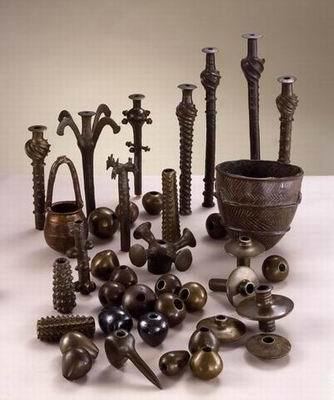Country Israel | ||
 | ||
Similar Tze'elim Stream, Chalcolithic Temple of Ein Gedi, Wadi Murabba'at, Nachal Arugot, Wadi Sdeir | ||
Nir alon nahal mishmar
Nahal Mishmar (Hebrew:נחל משמר) or Wadi Mahras (Arabic:مَحْرَس) is one of the smaller seasonal streams in the Judean Desert.
Contents
- Nir alon nahal mishmar
- Map of Nahal Mishmar
- 6000 year old copper bronze tools from nahal mishmar judean desert israel
- Geography
- Archaeology
- Dating use of lost wax process
- References
Map of Nahal Mishmar
6000 year old copper bronze tools from nahal mishmar judean desert israel
Geography
The valley or wadi of Nahal Mishmar begins in the Hebron hills, running east towards the Dead Sea. Its western part is shallow, at an altitude of approximately 270 m above sea level, and it proceeds to fall more than 300 meters into the Jordan Rift Valley before emptying into the Dead Sea, over 12 kilometres (7.5 mi). Nahal Mishmar runs north of the Tze'elim Stream, between Ein Gedi and Masada. Access is from Highway 90.
Archaeology
In 1961, Israeli archaeologist Pessah Bar-Adon discovered a hoard of Chalcolithic artifacts in a cave on the northern side of Nahal Mishmar, known since as the Cave of the Treasure. The hoard consisted of 442 decorated objects made of copper and bronze (429 of them), ivory and stone, including 240 mace heads, about 100 scepters, 5 crowns, powder horns, tools and weapons. Archaeologist David Ussishkin has suggested the hoard was the cultic furniture of the abandoned Chalcolithic Temple of Ein Gedi. Prominent finds from the hoard are currently on display in the archaeology wing of the Israel Museum in Jerusalem.
It is probable that the copper used for producing the objects was mined in Wadi Feynan.
Dating; use of lost-wax process
Many of these copper objects were made using the lost-wax process, one of the earliest known uses of this complex technique.
"Carbon-14 dating of the reed mat in which the objects were wrapped suggests that it dates to at least 3500 B.C. It was in this period that the use of copper became widespread throughout the Levant, attesting to considerable technological developments that parallel major social advances in the region."
Some of the tools in the hoard were made of arsenical bronze, or perhaps arsenical copper. Since they contain a rather high percentage of arsenic (4–12%), they should technically be described as arsenical bronze; also such objects have a bright, silvery appearance. Arsenic in copper makes it harder than pure copper and more easily cast.
